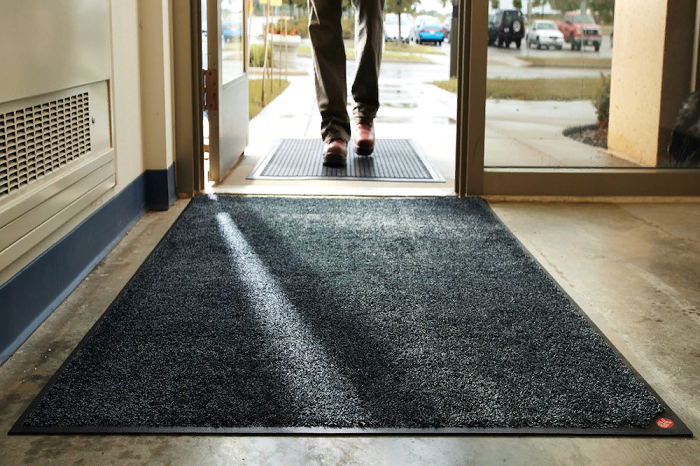
28 Jun The choice of dirt protection coating
There are a variety of protective coatings on the market today. At first glance, it may seem that all they differ in is their appearance. In fact, this is far from being the case, and different types of anti-splash coatings differ in workmanship and performance characteristics
Therefore, when purchasing coated, it is important to pay attention to the advantages and disadvantages of a particular material. So you should know which coating is best to use where.
To simplify the choice, you can answer a few questions.
1) Where is the coating arranged?
As a rule, for coating in the corridor, on the street or in an enclosed space, different materials with different degrees of protection are required.
2) What degree of protection is required?
If a high degree of protection is needed, they usually resort to the installation of dirt protection systems (for example, dirt protection at the entrance). If a standard degree is enough, one coating is enough, without installing systems.
3) What kind of material is required?
Consider the main materials from which the dirt-protective coating is most often made.
• Metal. Dirt protection made of metal has established itself as convenient, practical and durable. This species does not need complex daily care. It does a great job of removing dirt and dust from shoes. Corrosion-resistant metal is used in the manufacture of such dirt protection. However, such protection is not without its drawbacks: it is a high cost, a significant mass and the need for a dirt pan.
• Metal and rubber. This is one of the most common types of mudguards. Composed of aluminum profiles with rubber inserts.
• Well balanced rubber mats. Special texture effectively retains dirt of any origin. This cover is perfect for small areas. It is cheap, easy to use and replace. The disadvantage is the low resistance to aggressive reagents.
• Pile mats are good for indoor applications. They easily trap dust and dirt particles, but require constant care. They have a short service life, but at the same time are affordable.
• Synthetics. This type of coating does a good job of removing dust and dirt from the soles of shoes. It is convenient because it does not require special care. Among the shortcomings, one can only single out that it loses elasticity (and, as a result, efficiency) when used at low ambient temperatures, therefore it is most often used in gyms, as a sports modular coating for sports.
By answering these questions, you can greatly simplify the process of choosing the mudguard that best suits your needs.
.



No Comments